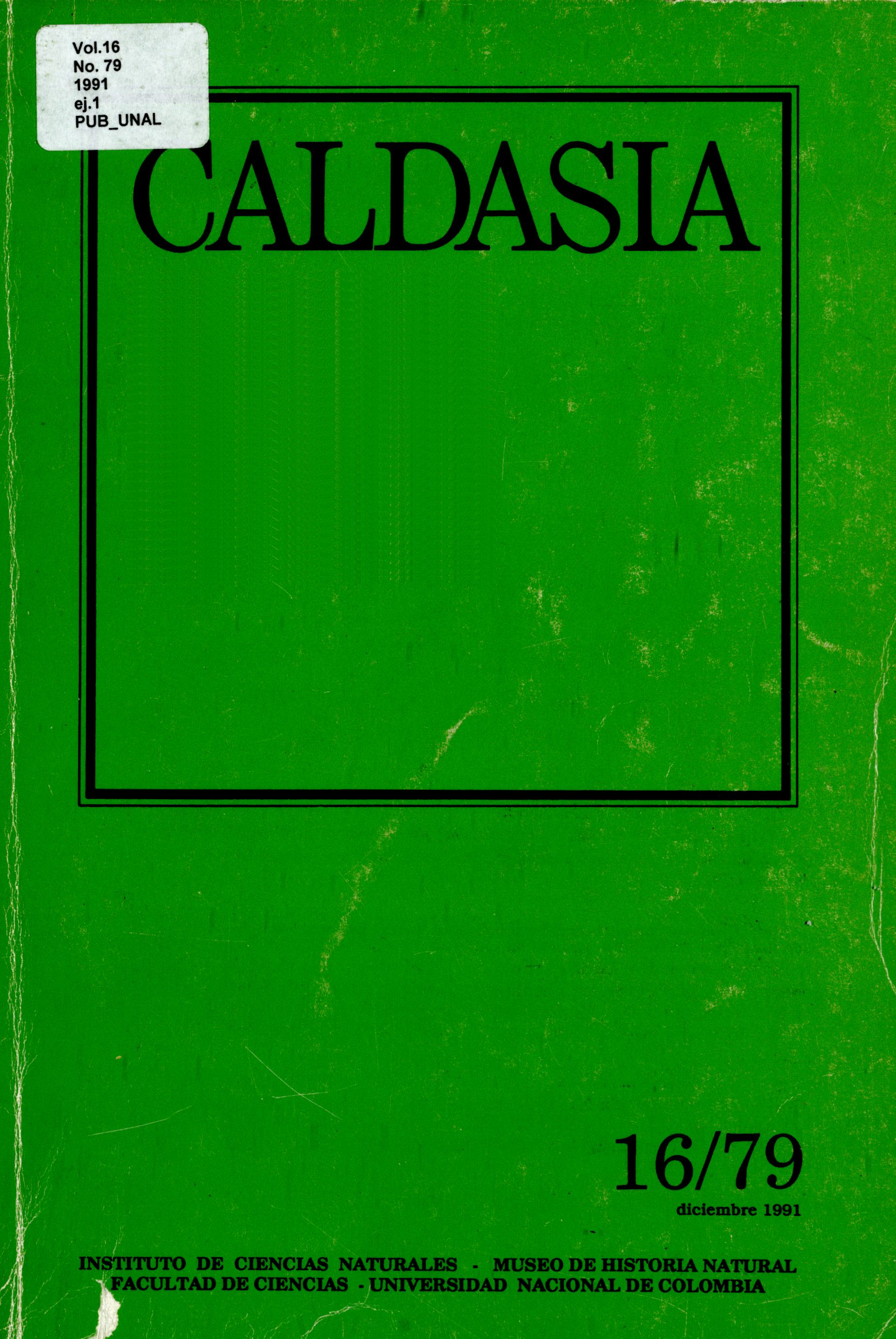Aspectos reproductivos del camarón Xiphopenaeus Kroyeri (Heller) en Costa Verde, Ciénaga (Caribe colombiano)
Keywords:
Camarón Xiphopenaeus Kroyeri, Heller, Camarón tití, Reproducción de camarones, Desarrollo gonadal, Parámetros hábitat (es)Camarón Xiphopenaeus Kroyeri, Heller, Camarón tití, Reproducción de camarones, Desarrollo gonadal, Parámetros hábitat (en)
Downloads
Para la obtención de juveniles y adultos del camarón Xiphopenaeus kroyeri se llevaron a cabo muestreos mensuales en el sitio conocido como Costa Verde (Ciénaga, Colombia) desde septiembre de 1988 hasta junio de 1989. Se tomaron también datos fisicoquímicos del agua de fondo (salinidad, temperatura, oxígeno) y se midió la transparencia. Se determinaron los diferentes estados de desarrollo gonadal de los individuos y se encontró que el mes de mayor abundancia de hembras maduras fue diciembre, y que a partir de enero hasta mayo aparecieron hembras desovadas. La talla mínima de maduración para hembras se determinó en 77.5 mm. de longitud total y para machos en 67.5 mm. La proporción de sexos demostró que los machos están presentes en mayor cantidad que las hembras durante todo el tiempo con una relación total de 1: 0.7.
How to Cite
APA
ACM
ACS
ABNT
Chicago
Harvard
IEEE
MLA
Turabian
Vancouver
Download Citation
Article abstract page views
Downloads
License
Copyright (c) 1991 Caldasia

This work is licensed under a Creative Commons Attribution 4.0 International License.
Authors who publish with this journal agree to the following terms:
- Authors retain copyright and grant the journal right of first publication with the work simultaneously licensed under a Creative Commons Attribution License that allows others to share the work with an acknowledgement of the work's authorship and initial publication in this journal.
- Authors are able to enter into separate, additional contractual arrangements for the non-exclusive distribution of the journal's published version of the work (e.g., post it to an institutional repository or publish it in a book), with an acknowledgement of its initial publication in this journal.
- Authors are permitted and encouraged to post their work online (e.g., in institutional repositories or on their website) prior to and during the submission process, as it can lead to productive exchanges, as well as earlier and greater citation of published work (See The Effect of Open Access).





























